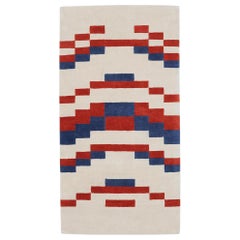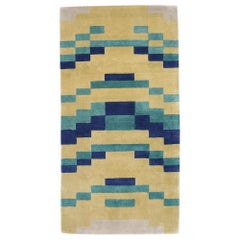Study For Sanctuary Josef Albers
2010s Indian Bauhaus North and South American Rugs
Silk
2010s Indian Bauhaus North and South American Rugs
Silk
People Also Browsed
2010s American Modern Table Lamps
Steel, Brass, Silver Leaf
21st Century and Contemporary Swedish Scandinavian Modern Wall Lights an...
Metal
21st Century and Contemporary Swedish Scandinavian Modern Wall Lights an...
Metal
21st Century and Contemporary Italian Mid-Century Modern Wall Lights and...
Brass, Metal, Aluminum
2010s Swedish Side Tables
Oak
21st Century and Contemporary German Mid-Century Modern Chandeliers and ...
Brass
21st Century and Contemporary Italian Mid-Century Modern Flush Mount
Metal, Brass
21st Century and Contemporary Italian Mid-Century Modern Chandeliers and...
Aluminum, Metal, Brass
2010s Italian Renaissance Wall Mirrors
Glass
2010s German Mid-Century Modern Chandeliers and Pendants
Brass
Vintage 1970s French Organic Modern Sofas
Leather, Upholstery
Vintage 1950s French Mid-Century Modern Desks and Writing Tables
Oak, Plywood
21st Century and Contemporary Swedish Scandinavian Modern Wall Lights an...
Metal
21st Century and Contemporary Danish Scandinavian Modern Side Tables
Wood
2010s Austrian Jugendstil Chandeliers and Pendants
Silk
21st Century and Contemporary Indian Mid-Century Modern Side Tables
Wood
Anni Albers for sale on 1stDibs
As mesmerizing as Anni Albers’ weavings and prints are, her art represents only a fraction of her achievement. In addition to being one of the most important textile artists of the 20th century, she was a designer, writer and teacher.
Albers was born Annelise Fleischmann in 1899 to a well-to-do Jewish family in Berlin. She studied at the School of Applied Art in Hamburg and then attended the Bauhaus, the utopian workshop founded in Weimar in 1919 by architect Walter Gropius.
The school envisioned a unity of art and design, with the goal of training designers and artisans who could create objects both functional and artistic for mass production. At the Bauhaus, where women’s choices for study were limited, the aspiring Albers ended up in the weaving workshop. Although she initially perceived the discipline as unserious, once she had a thread in hand, she was obsessed.
“I heard Paul Klee speak, and he said to take a line for a walk, and I thought, ‘I will take thread everywhere I can,’” she once told Nicholas Fox Weber, executive director of the Albers Foundation.
At the Bauhaus, Anni met and married fellow student Josef Albers, who would later become a celebrated color theorist and painter. His “Homage to the Square” paintings, which explored the relationships between colors, are now considered modernist masterpieces, and his treatment of color was crucial to the development of the Op art movement.
After graduating in 1930, Anni and Josef both became teachers at the Bauhaus, but when the Nazis came to power, the school was shut down. In 1933, fleeing the Nazis, the couple emigrated to the U.S., where they both became teachers at Black Mountain College, in North Carolina.
Black Mountain, which rejected educational norms and was known for its free-spirited atmosphere, produced many luminaries of modern American art — among them Robert Rauschenberg and Cy Twombly, both students of the Alberses’. In addition to teaching, Anni continued her own artistic practice, making what she called “pictorial weavings”: abstract wallhangings having the same formal qualities as a painting.
The Alberses were fascinated by Latin America even before they crossed the Atlantic, so from North Carolina, they made numerous road trips to Mexico and Peru to collect pre-Columbian art. The influence of the ceramics and textiles the couple discovered in their travels is clear in Anni’s work yet her approach to weaving was unorthodox.
Albers incorporated unusual materials such as cellophane and metallic thread. She intertwined linked threads in innovative ways and added knots as artistic elements, as in “Dotted” Weaving (1959). She created studies using corn kernels, grass, twisted paper, lines made with a typewriter and pin pricks.
In addition to her art pieces, Anni designed many functional textiles for mass production. In 1949, Gropius commissioned her to create fabrics for the Harvard dormitories he designed. Shortly afterward, she was commissioned to design fabrics for the furniture company Knoll. In the late ’50s, Anni began publishing books: On Designing, in 1959, and On Weaving, in 1965.
In her 60s, when it became difficult for her to operate a loom, Anni turned her energies to making prints. Beyond the increased recognition of weaving as an art form, another reason for the renewed interest in Anni’s work is that art history has now turned its lens on women artists who were previously overlooked.
Find Anni Albers rugs, wall decor and original prints on 1stDibs.
A Close Look at bauhaus Furniture
The Bauhaus was a progressive German art and design school founded by the architect Walter Gropius that operated from 1919 to 1933. Authentic Bauhaus furniture — sofas, dining chairs, tables and more — and the school’s followers married industrial and natural materials in simple, geometric forms. The goal of the Bauhaus was to erase the distinction between art and craft while embracing the use of new technologies and materials.
ORIGINS OF BAUHAUS FURNITURE DESIGN
- Art and design school established in Germany in 1919
- Promotion of a union of art, craft and technology
- Design intended for mass production
- School’s workshops focused on cabinetry, metalworking, typography, textiles and more
- Informed by De Stijl, Constructivism, Art Nouveau, Arts and Crafts, and modernism; influenced mid-century modernism, Scandinavian modernism
CHARACTERISTICS OF BAUHAUS FURNITURE DESIGN
- Emphasis on craft
- Simplicity, order, clarity and a prioritization of functionalism
- Incorporation of geometric shapes
- Minimalist and refined, little to no ornamentation
- Use of industrial materials such as tubular chrome, steel and plastic as well as leather, cane and molded plywood in furniture and other products
BAUHAUS FURNITURE DESIGNERS YOU SHOULD KNOW
- László Moholy-Nagy
- Ludwig Mies van der Rohe
- Anni Albers
- Josef Hoffmann
- Marcel Breuer
- Marianne Brandt
AUTHENTIC BAUHAUS FURNITURE ON 1STDIBS
The name Bauhaus is derived from the German verb bauen, “to build.” Under the school’s innovative curriculum, students were taught the fine arts, such as painting and sculpture, as well as practical skills like carpentry and metalworking.
The school moved from Weimar in 1925 to the city of Dessau, where it enjoyed its heyday under Gropius, then Hannes Meyer and Ludwig Mies van der Rohe. The period from 1932 to 1933 when it operated in Berlin under Mies was its final chapter. Despite its brief existence, the Bauhaus has had an enduring impact on art and design in the United States and elsewhere, and is regarded by many as the 20th century’s chief crucible of modernism.
The faculty roster at the Bauhaus reads like a who’s who of modernist creative genius — it included such artists as Paul Klee, Wassily Kandinsky and László Moholy-Nagy along with architects and designers like Mies and Marcel Breuer, who became known for his muscular brutalist-style concrete buildings in the postwar years. In 1925, while he was head of the Bauhaus carpentry workshop, Breuer gave form to his signature innovation: the use of lightweight tubular-steel frames for chairs, side tables and sofas — a technique soon adopted by Mies and others. Breuer’s Cesca chair was the first-ever tubular steel frame chair with a caned seat to be mass produced, while the inspiration for his legendary Wassily chair, a timeless design and part of the collection crafted to furnish the Dessau school, was the bike he rode around campus.
Bauhaus design style reflects the tenets by which these creators worked: simplicity, clarity and function. They disdained superfluous ornament in favor of precise construction. Seating pieces such as side chairs, armchairs or club chairs for example, were made with tubular metal or molded plywood frames, and upholstery was made from leather or cane. Above all, designs in the Bauhaus style offer aesthetic flexibility. They can be the elements of a wholly spare, minimalist space, the quiet foundation of an environment in which color and pattern come from one’s own collection of art and artifacts.
Today, from textiles to typefaces, architecture, furniture and decorative objects for the home, Bauhaus creations continue to have an outsize influence on modern design.
Find a collection of authentic Bauhaus furniture on 1stDibs.
Finding the Right area-rugs-carpets for You
Antique, new and vintage area rugs and carpets are a simple way to add warmth and style to any space. Area rugs can be seasonal or changed with other decorative objects to refresh an interior. Carpet piles materials can vary from wool and cotton to silk and synthetic fibers, and the purpose of a floor covering can range from reducing noise to offering a place to sit.
Vintage rugs can ground a space, and arranging furniture around them creates a measured focal point. Key furniture pieces can be placed on the rug or just the legs, such as with furniture like coffee tables in your living room.
So, how can you tell if a rug is high quality or vintage?
The three main components that determine the quality of a piece are the dyes, the wool and the number of knots per square inch. Ultimately, however, if you want to be sure the rug you’re buying is truly an antique, it is best to consult an expert.
If you want a creative design that stands out, area rugs or carpets can provide layers of color. Rugs and carpets reflect a global heritage of textiles and weaving, such as ornately patterned Persian and Indian designs. Visually striking Chinese rugs can add a delicate touch of color, while modern rugs make a statement with their geometric patterns.
Turkish rugs, with their ruby reds and misted blues, their entwined botanical designs and rhythmic geometries, are as beloved today as they were in the 13th century. The West’s current infatuation with Moroccan and North African tribal rugs stretches to the mid-20th century, when modern furniture designers embraced bold geometric patterns and even bolder palettes as counterpoints to form-follows-function interiors. Alvar Aalto, Frank Lloyd Wright and Le Corbusier were among the designers who used these rustic, natural rugs to offset austere interiors.
If you properly maintain your antique and vintage rugs, they will last for many years. When you’re thinking about how to clean a rug, it is important to keep in mind that your vacuum is not too harsh for your favorite floor covering. Frequent vacuuming is in fact necessary to remove everyday dirt that otherwise wears down the pile. Omri Schwartz of Nazmiyal does, however, stipulate that “it’s best to use an ordinary suction vacuum without bristles, as the bristles can damage the rug’s pile.” Rotating the carpet every couple of years is also recommended — it ensures that the rug gets even foot traffic.
On 1stDibs, find a vintage rug or carpet to add a layer of beauty and function to your room.



